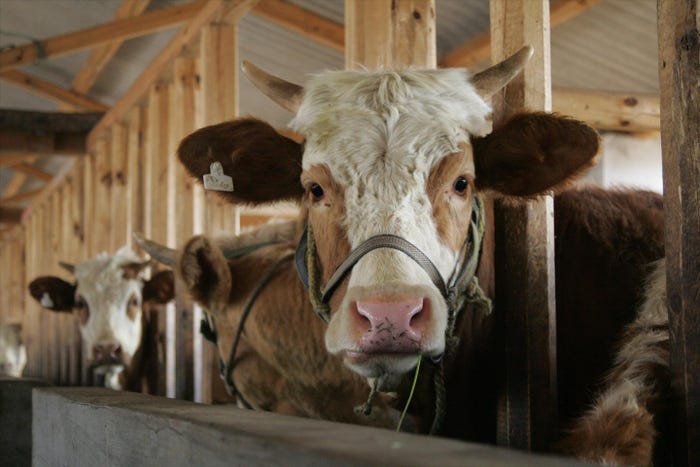Sustainably intensifying livestock production is one way to balance public health outcomes while capturing livestock sector's mitigation potential.

Scientists have found that the global livestock sector can maintain the economic and social benefits it delivers while significantly reducing emissions and, in doing so, help meet the global mitigation challenge.
The global livestock sector supports about 1.3 billion producers and retailers around the world and is a significant contributor to the global economy, according to the Commonwealth Science & Industry Research Organization (CSIRO) in Australia.

Photo: Cattle kept in a communal dairy feeding center in Yunnan, China. Credit: ILRI/Stevie Mann.
The new analysis, published March 22 in Nature Climate Change, estimates that livestock could account for up to half of the mitigation potential of the global agricultural, forestry and land use sectors, which comprise the second-largest source of emissions globally, after the energy sector.
CSIRO's Dr. Mario Herrero, lead author of the study, said this new accounting of the mitigation potential for the global livestock sector is the most comprehensive analysis to date as it considers both the supply and demand sides of the industry.
A key finding is that the best mitigation potential from the livestock sector can result from an integrated view of changes in land use and practices that considers the whole of agriculture and forestry as well as looking at dietary patterns and how the needs of global nutrition are addressed.
"Livestock has a role in a healthy and sustainable diet, and the sector has an important economic and social role, particularly in developing countries," Herrero said. "We need to balance these health outcomes and the economic and social benefits while also capturing the mitigation potential the livestock sector can offer."
Herrero said sustainably intensifying livestock production is one way this can be done. "We've found that there are a number of ways that the livestock sector can contribute to global greenhouse gas mitigation," he said.
"New management practices such as rotational grazing and dietary supplements can increase livestock production and reduce greenhouse gas emissions," Herrero explained. "We need to increase the adoption of these different strategies by making sure that we have the right incentives. If appropriately managed with the right regulatory framework, these practices can also achieve improved environmental health over and above the greenhouse gas benefits delivered, for example, through improved ground cover and soil carbon."
The research was carried out through a partnership among CSIRO, the International Institute for Applied Systems Analysis, the CGIAR Research Program on Climate Change, Agriculture & Food Security, Colorado State University, University of Aberdeen, Chalmers University of Technology, Pennsylvania State University, U.N. Food & Agriculture Organization, Wageningen University, Karlsruhe Institute of Technology, International Livestock Research Institute, University of Oxford and PBL Netherlands Environmental Assessment Agency.
About the Author(s)
You May Also Like

.png?width=300&auto=webp&quality=80&disable=upscale)

